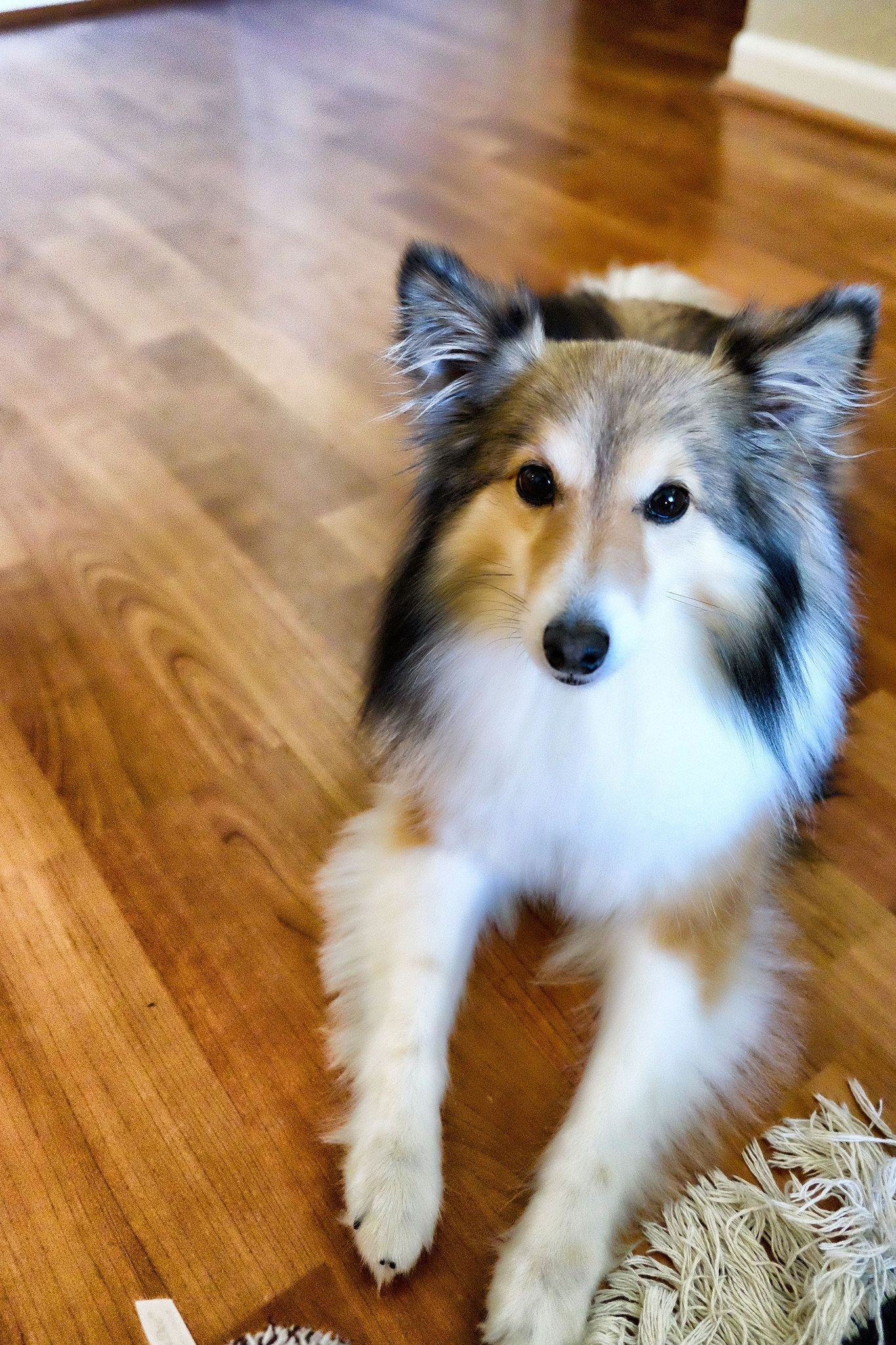The indomitable tri-color husky-sheltie – slightly revised
I mentioned in my last post that I thought this story could be improved with the addition of some specifics about sightings of the dogs and anecdotes told about them. I did add some details and think the story is improved. The trick is to add detail but not so much that it slows down the pace of the story. So here's a slightly revised version.
Is this a descendant of the litter that almost drowned?
The Indomitable Tri-color Husky-Sheltie
In a time that now dwells in the realm of legend, a trapper who caught beaver up and down the Illinois River stopped in at a bustling settlement for supplies. He spent a long time haggling over the price of flour, too long it turns out, because his spirited husky dog grew bored. He wiggled free of a rope that tethered him to a post and ran off.
It wasn’t long before the husky, which was on the small side but extremely agile and able to leap like a tree frog, jumped a fence and pounced on a widow's prize dog. The bitch was in heat and of a breed resembling the modern-day sheltie. Hearing a ruckus in her yard, the woman grabbed her slingshot and rushed outside.
Fit to be tied, she cried out, “Be gone you miserable cur!”
But the canines had already mated by the time she took aim and let a stone fly, nicking the intruder as he bounded away.
She bred the sullied female with a suitable male from her pack the next day and hoped for the best. Her family had grown a reputation up and down the Mississippi and its tributaries as breeders of superior farm dogs, and she counted on trading puppies for food and other necessities to keep her through winters so bitter they withered the brain. But when the litter arrived, three looked like their mother in every way; three were tricolored, scruffy and clearly pulsed with husky blood, which she considered inferior.
Incensed by the threatened lineage of two small herding dogs her Scots grandfather had brought across the Atlantic and then overland to a strange and wild world, the widow gnashed her teeth as she watched the pups grow.
“These mongrels will not do,” she griped. “I can’t stand to look at them.”
Finally, before daybreak one morning, she hogtied the pups she didn’t want. Next, she stuffed them, along with a brick, into a burlap sack and tied it closed with the strongest of strong double knots. Then she slung it over her back and slouched to the banks of the Illinois. She tossed the writhing sack as far as she could and stayed to watch it splash and sink.
“There! No more mutts. Problem solved,” she crowed and tromped back home, satisfied.
To this day, nobody knows how the pups, managed to break their bonds, claw out and swim to shore. Some say the husky that fathered the brood saw them hit the water, dove in when the woman turned her back, grabbed the sack in his teeth and hauled his offspring to shore. Others say that as soon as the sack was airborne, the puppies grew fangs strong as steel and chewed their way out before they hit bottom. Some even believe it was Johnny Appleseed himself who saved the litter. As the story goes, the do-gooder was bathing his feet in the soothing water after planting his quota of apple trees that day when he saw the attempted drowning and saved the mutts.
Did the husky save the litter?
Over the years, sightings of this curious tricolor mix of speed and spunk were recorded all along the banks of the Illinois and its tributaries. The indomitable canines often scampered in meadows, rolling and yipping and jumping higher than any other sort of dog could. Encounters with them were commonplace. They never preyed on livestock. Instead, the dogs would arrive when a herd of sheep, goats or cows was startled by gunshot or predators on the prowl. And the dogs would round up the scattering animals and circle the herd, finding off all threats, until the people responsible for the livestock arrived. Then the canines would speed off again.
Sometimes, if hungry children fished along the riverbank without success, a few husky-sheltie dogs would dive into the water, catch fish one by one, dropping each on the banks until a bounty was at at the children’s feet. As usual, they’d depart as quickly as they came.
Families helped the dogs, too, from time to time, especially during harsh winters when food in the wild was scarce. They’d leave leftover stew on their porches and bedding, too, in the hopes a dog would decide to stay. Occasionally, a dog would accept the comfort offered by these families and stick around come spring. People trained them just like any other dogs, and they proved to be able and loyal. However, sightings of the half-breeds gradually tapered off and encounters with them grew rare.
Now, once in a generation or so, a scruffy pup shows up at a family’s door, usually when a new baby is born. The pup swiftly wins the family over and becomes devoted to the babe. And like every tri-color husky-sheltie mixed dog that came before, the pup is Houdiniesque, with uncanny agility and a knack for breaking free of any and all restraints.
The End
The story's basically the same, but I think it's improved. What do you think?


